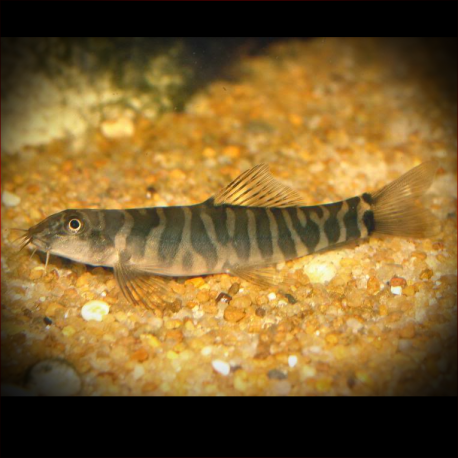More info
Datasheet
| Minimum Tank Size | 72 litres / 19.02 US gallons |
| Maximum Size | 4.5cm / 1.77inches |
| Temperature | 20°C / 68.00°F - 26°C / 78.80°F |
| Hardness | 2.02dgH / 36ppm - 12.05dgH / 215ppm |
| pH | 6.0-7.5 |
General Description
The Schistura Maepaiensis, part of the Nemacheilidae family, is distinguishable by its unique patterning of irregular body bars with thin dark borders, branched caudal and dorsal-fin rays, and specific body features such as a suborbital flap in males and a complete lateral line. This species belongs to a diverse genus of loaches with over 190 members, typically inhabiting flowing streams or areas close to waterfalls, with some even being cave-dwelling and blind.
Aquarium Setup
To maintain Schistura Maepaiensis successfully, it is advisable to replicate a flowing stream or river environment in the aquarium. The tank should have a substrate of rocks, sand, and fine gravel, along with water-worn boulders and driftwood branches for shelter and territory. Hardy aquatic plants like Microsorum, Bolbitis, or Anubias species can be added. Clean, well-oxygenated water with gentle movement should be ensured using power filters, powerheads, or airstones. Regular water changes are essential to maintain water quality.
Behaviour
Schistura Maepaiensis is not overly aggressive but requires tankmates to be selected carefully to avoid issues. Slow-moving or long-finned species should be avoided, while fishes that inhabit similar open water biotopes make suitable companions. Though not gregarious, a small group can be maintained in a well-structured tank with rocky structures. Conspecific aggression may occur, especially in small or sparsely-decorated tanks.
Feeding and Diet
In their natural habitat, Schistura species are omnivorous, feeding on small insects, worms, crustaceans, and zooplankton, with some plant matter. In aquariums, they should be offered a varied diet including live and frozen foods like Daphnia, Artemia, and bloodworms. While they can consume dried foods of a suitable size, these should not be the sole dietary option to maintain optimal coloration and health.
Reproduction & Dimorphism
Details on the reproduction of Schistura Maepaiensis are currently unrecorded. Sexual dimorphism can be observed, with males having a suborbital flap and longer pectoral fins with tubercules on some rays, while females tend to be thicker-bodied, particularly when carrying eggs.
Habitat and Distribution
Originally found in streams with a substrate of rocks and boulders with a moderate to swift flow, Schistura Maepaiensis is indigenous to the Salween River basin in Thailand and possibly Myanmar. Populations also exist in forest-shaded streams and tributaries of the Salween River. The species faces habitat threats due to human activities, highlighting the importance of conservation efforts.

